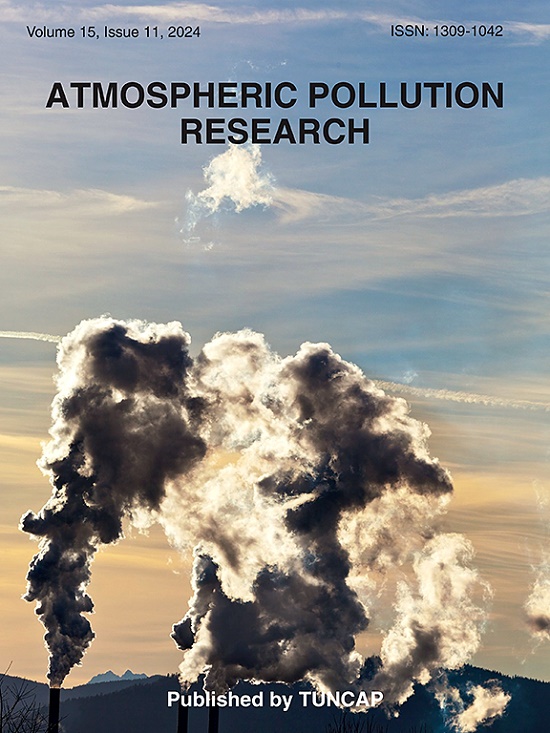Exposure of city-dwellers to particulate matters during commuting trips in the metropolitan area of Karachi
IF 3.9
3区 环境科学与生态学
Q2 ENVIRONMENTAL SCIENCES
引用次数: 0
Abstract
The brisk and persistent surge in the population, urbanization, automobiles, and industries fused with climate change and geogenic conditions have materialized in acute ambient air pollution problems in the mega city Karachi with profound health impacts. To evaluate the extent of personal exposure and quantification of the particulate matter (PM) concentrations, we organized the mobile size-segregated PM (TSP, PM10, PM7, PM2.5, and PM1) monitoring campaign in Karachi. Seven in-vehicle tracks in Karachi's diverse industrial/commercial/residential regions were investigated. High spatial variability in PM concentrations was observed along each track. Results demonstrate that commuters in Karachi were exposed to a significantly higher level of PM than several cities in high-income countries. Mean concentrations across the seven tracks were: PM1 (8.7 ± 8.0 μg/m3), PM2.5 (51.9 ± 48.0 μg/m3), PM7 (386 ± 538 μg/m3), PM10 (527 ± 646 μg/m3), and TSP (685 ± 769 μg/m3). The carcinogenic risks of PM2.5 were found to be outside the acceptable range (10−6 - 10−4). Therefore, better insight into PM pollution exposure and its determinants in Karachi should influence the development of more appropriate exposure reduction strategies and have major public health effects.
城市居民在卡拉奇市区通勤期间暴露于颗粒物
人口、城市化、汽车和工业的快速和持续增长,与气候变化和地质条件相融合,在超大型城市卡拉奇形成了严重的环境空气污染问题,对健康产生了深远的影响。为了评估个人暴露程度和颗粒物(PM)浓度的量化,我们在卡拉奇组织了移动大小分离的PM (TSP, PM10, PM7, PM2.5和PM1)监测活动。调查了卡拉奇不同工业/商业/住宅区的七条车内轨道。各轨道的PM浓度存在较大的空间变异性。结果表明,卡拉奇的通勤者暴露于PM水平明显高于高收入国家的几个城市。7条轨迹的平均浓度分别为:PM1(8.7±8.0 μg/m3)、PM2.5(51.9±48.0 μg/m3)、PM7(386±538 μg/m3)、PM10(527±646 μg/m3)和TSP(685±769 μg/m3)。PM2.5的致癌风险超出可接受范围(10−6 ~ 10−4)。因此,更好地了解卡拉奇的PM污染暴露及其决定因素应影响制定更适当的减少暴露战略,并对公共卫生产生重大影响。
本文章由计算机程序翻译,如有差异,请以英文原文为准。
求助全文
约1分钟内获得全文
求助全文
来源期刊

Atmospheric Pollution Research
ENVIRONMENTAL SCIENCES-
CiteScore
8.30
自引率
6.70%
发文量
256
审稿时长
36 days
期刊介绍:
Atmospheric Pollution Research (APR) is an international journal designed for the publication of articles on air pollution. Papers should present novel experimental results, theory and modeling of air pollution on local, regional, or global scales. Areas covered are research on inorganic, organic, and persistent organic air pollutants, air quality monitoring, air quality management, atmospheric dispersion and transport, air-surface (soil, water, and vegetation) exchange of pollutants, dry and wet deposition, indoor air quality, exposure assessment, health effects, satellite measurements, natural emissions, atmospheric chemistry, greenhouse gases, and effects on climate change.
 求助内容:
求助内容: 应助结果提醒方式:
应助结果提醒方式:


